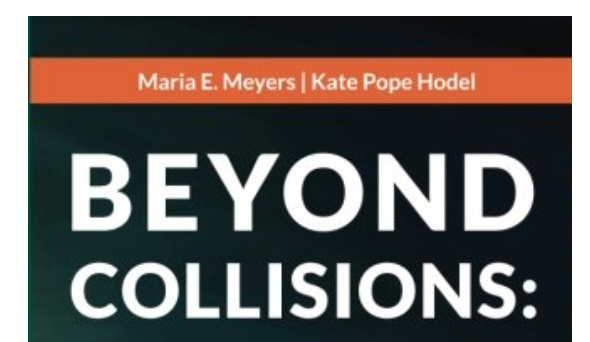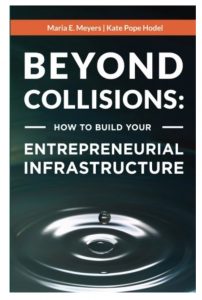
The importance of outside voices in our communities
 There’s a new book on the market that presents a practical and comprehensive view of how to build an entrepreneurial infrastructure in our communities. “Beyond Collisions” by Maria Meyers and Kate Hodel of SourceLink, is a genuine “how to” book for supporting entrepreneurs. And, it provides economic and community developers with a powerful outside voice that can make a difference when you’re trying to drive change inside your community.
There’s a new book on the market that presents a practical and comprehensive view of how to build an entrepreneurial infrastructure in our communities. “Beyond Collisions” by Maria Meyers and Kate Hodel of SourceLink, is a genuine “how to” book for supporting entrepreneurs. And, it provides economic and community developers with a powerful outside voice that can make a difference when you’re trying to drive change inside your community.
Outside voices are important. They are often capable of delivering a message you’ve tried to relay for years. It’s sort of like talking to your kids. You can tell them something over and over to no avail, but when someone who is perceived to be cooler, smarter, or puts peanut butter up his nose on YouTube says the same thing, it’s awesome!
Granted, it can be a bit maddening when it’s not your voice people pay attention to. Yet the trick, with your kids and your community, is to grit your teeth, smile and be relieved that the message you have tried to convey is finally being taken seriously.
That’s how I felt when I read “Beyond Collisions.” I kept thinking, “I’ve said that. I know that. I’ve done that.” And when I finished, I thought, “Dang, why didn’t I write that?” Trust me, you’ll feel the same way. And you’ll love it!
Here are a few components of the book that hit home with me:
- There is comfort in starting where you are. Building an entrepreneurial infrastructure can seem daunting. Maria and Kate emphasize the importance of beginning where you are rather than worrying about where you should be.
- This book really is about you. Instead of relying on the tried and true examples of entrepreneurial hotspots like Boulder, Boston and Silicon Valley, the book features stories from Puerto Rico, Wichita, Fargo, Cork Ireland, western Kansas, St. Louis, Anchorage and more. Regardless of the size or strength of your community, you’ll find examples from places that are relatable.
- You really can measure your entrepreneurial infrastructure. Measurement becomes a reality rather than a frustrating process of nailing down Jello. Find your gaps, figure out how you’re going to fill them, start the process, and report on your progress using data you compiled. Measure what matters to YOU, not what matters to another community.
- It takes a village. Time and time again you’ve tried to get diverse audiences involved in building your infrastructure. This book has them all — investors, bankers, corporations, universities, economic developers, philanthropists and entrepreneurs of all shapes, sizes and colors. Unless you’re the guy (or gal) putting peanut butter up your nose on YouTube, it’s likely you’ll see yourself in this book.
- A practical guide to funding. Maria’s rules are simple. State your problem, find data that supports you actually do have a problem, find viable solutions, recruit partners (don’t go it alone), find matching money and tell stories of progress and results.
Building an entrepreneurial infrastructure is not for the faint of heart. It takes a great deal of patience and passion as we compete with the glamour and perceived speed of business attraction. But those of us who do it every day now have a book that provides not just a roadmap, but an outside voice that helps prove we really do know what we’re doing.
Thanks Maria and Kate for putting our thoughts and actions into a practical and compelling read. You are an inspiration to all who believe entrepreneurship-led economic development is the key to prosperity, regardless of where we call home.